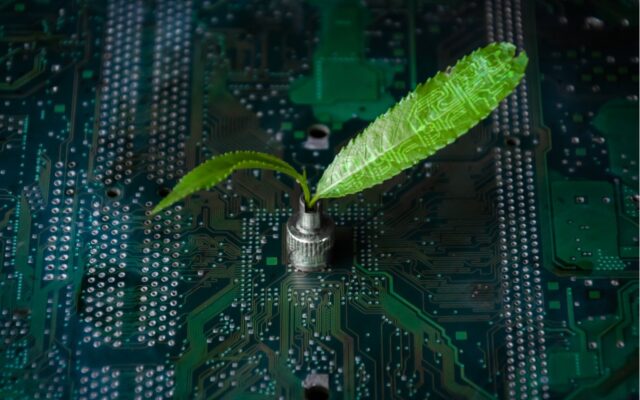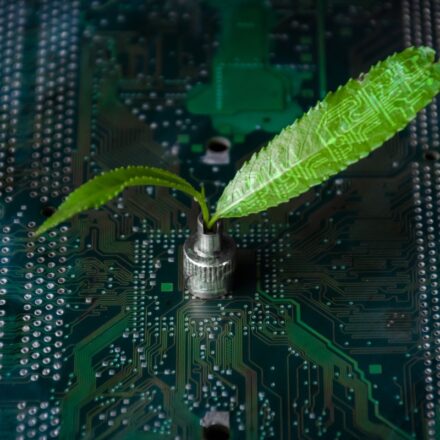2022 is expected to rank among the ten warmest years on record, according to the US National Oceanic and Atmospheric Administration. This is just one of the many effects of climate change.
Technology is essential to tackling the biggest issues we are facing today. One key focus at this year’s COP27 was the promise of innovation and sustainable technologies. According to Gartner, sustainable technology has become one of the top three priorities for investors and is among the top 10 strategic technology trends for 2023.
At Dell Technologies, we put sustainability at the core of everything we do, setting strong commitments and taking the right actions to reduce our environmental impact and drive positive outcomes for business and society. From how we make our innovative products to what our customers, partners and communities can do with them, our technology will help create a better, more sustainable future.
Here are some ways we can leverage technology to achieve positive outcomes for business and the environment.
Efficient Data Centers for a Digital-first World
One of the most energy-intensive resources across all industries is data centers. With nearly 40% of the energy going to cooling systems to maintain a temperature-controlled environment, estimates suggest data centers account for up to 5% of global greenhouse gas emissions.
The silver lining? Energy efficiency best practices and enhancements in IT hardware and cooling technologies have curtailed the growth in energy demand from data centers globally. Dell recently launched a green data center in India for leading Fintech company PhonePe, designed and built with advanced alternative cooling technologies. It uses liquid immersion technology and is optimized for increased energy efficiency, resulting in significant energy savings and reduced carbon footprint.
Designing Servers with Purpose
Now more than ever, we are considering how we source and produce technology, as well as our portfolio’s impact on the environment. At Dell, we define efficient design as one that maximizes the amount of work completed with the fewest resources possible.
That is why our next generation of PowerEdge servers offer advancements in Dell Smart Cooling technology and feature a greater core density that reduces heat generated, energy consumed and the burden on other resources required to power the systems. Engineering advancements have helped us reduce our energy intensity in PowerEdge servers by 83% since 2013 and increase our energy efficiency by 29% from previous generations.¹ PowerEdge servers also contain up to 35% recycled plastic.¹ Dell also offers a multipack option, allowing servers to be delivered more sustainably when shipping multiple servers. Following this strategy ensures each box wastes no space, energy or opportunity.
Take Trintech, a rapidly growing financial SaaS provider, as an example. By migrating its SQL server workload onto Dell PowerEdge Servers, Trintech experienced gains beyond its sustainability goals. With the capacity to support three times the original number of customers, the company achieved increased revenue, flexibility, scalability, and ease of deployment and management.
Closing the Loop with 3 Rs: Repair, Reuse, Recycle
The world produces more than 50 million tons of e-waste each year, and when they are not disposed of properly, they bring adverse harm to human health and the environment. We are committed to shifting from a linear to a circular economy at Dell. This means ensuring products no longer in use are repaired for reuse or recycled to keep products and materials in circulation for longer. Not doing so would render them nothing more than waste, leading to environmental degradation. Dell has committed to reuse or recycle one product for every equivalent product sold and that we will make 100% of our packaging and over half of product content with recycled or renewable materials by 2030.
Last December, we launched Concept Luna a prototype of a laptop designed to explore revolutionary design ideas that make components immediately accessible, replaceable and reusable. Every facet of the system is meticulously designed to reduce resource use and keep even more circular materials in the economy. If realized, we could expect an estimated 50% reduction in our overall product carbon footprint.
As António Guterres, Secretary-General of the United Nations, puts it bluntly: “Prioritize climate or face catastrophe.” Businesses have a part to play in preserving and restoring the environment, even in the face of global headwinds. The good news is, we have the right tools and processes to solve today’s most pressing climate issues. By leveraging technology as a catalyst, we will start a chain of positive actions that puts us on a path to a better, more sustainable future.
For more information on Dell’s commitment to advancing sustainability, please visit us here.
1 Source – Dell Regulatory and Environmental Datasheets


